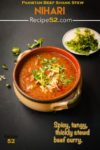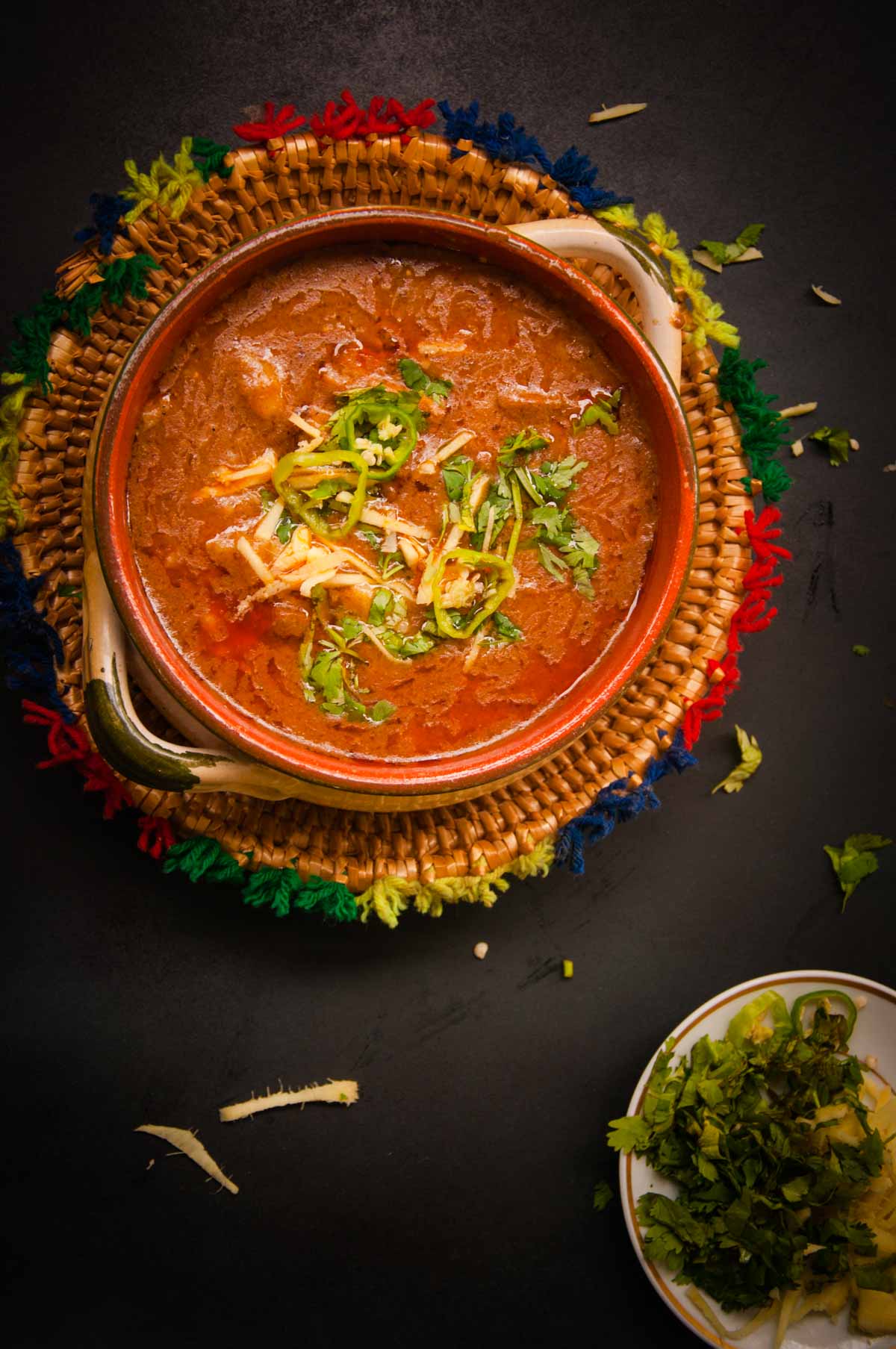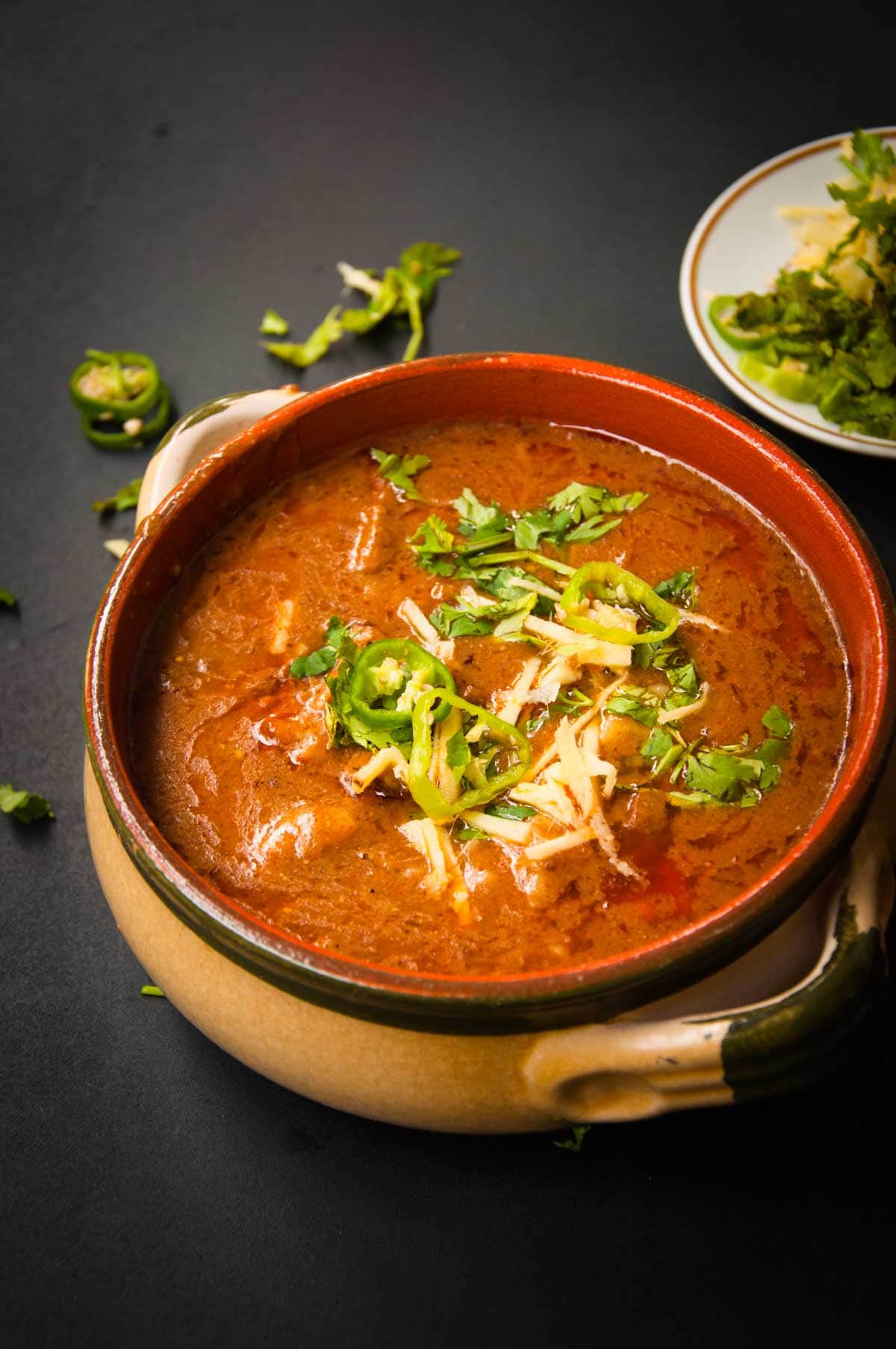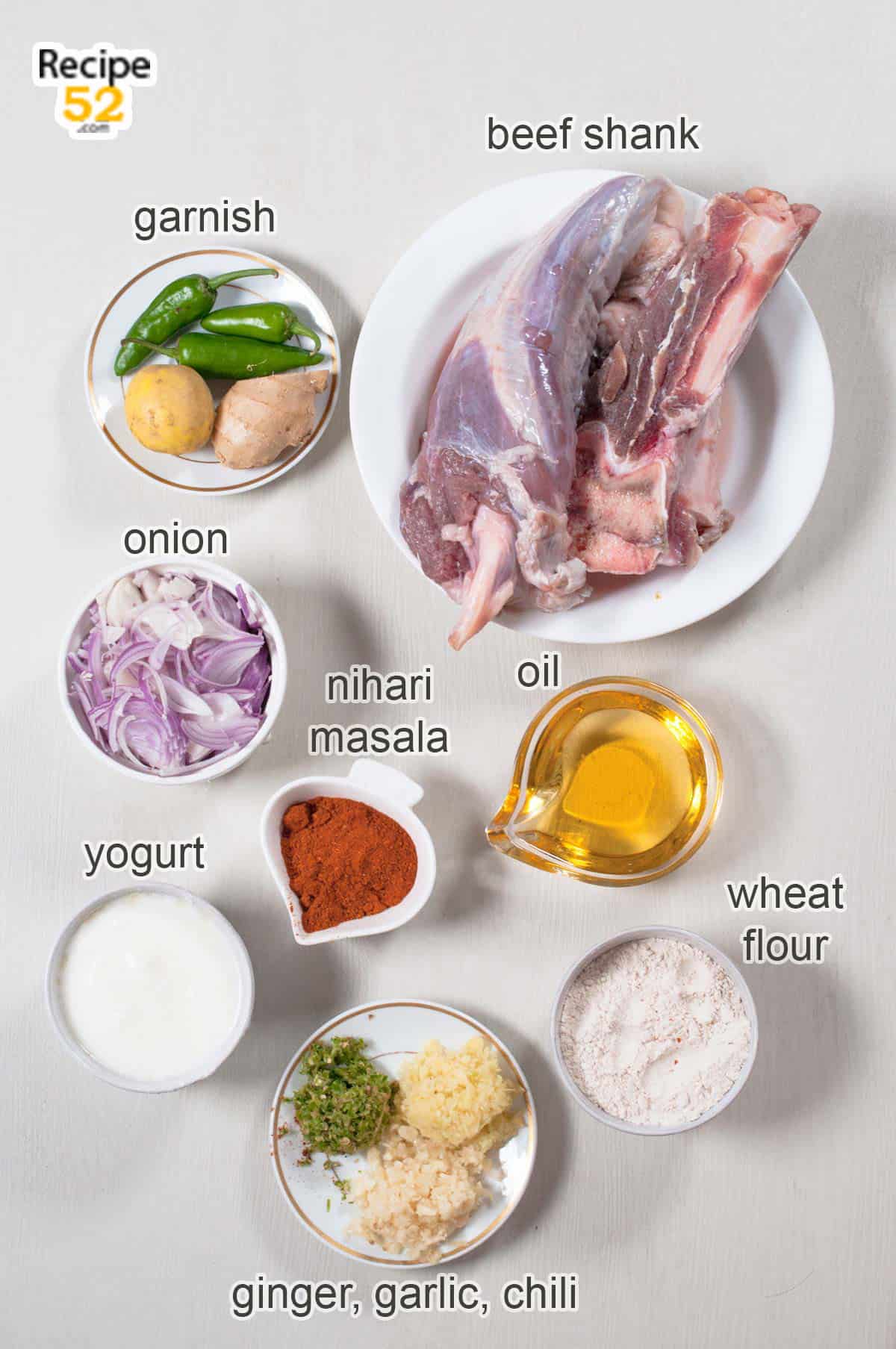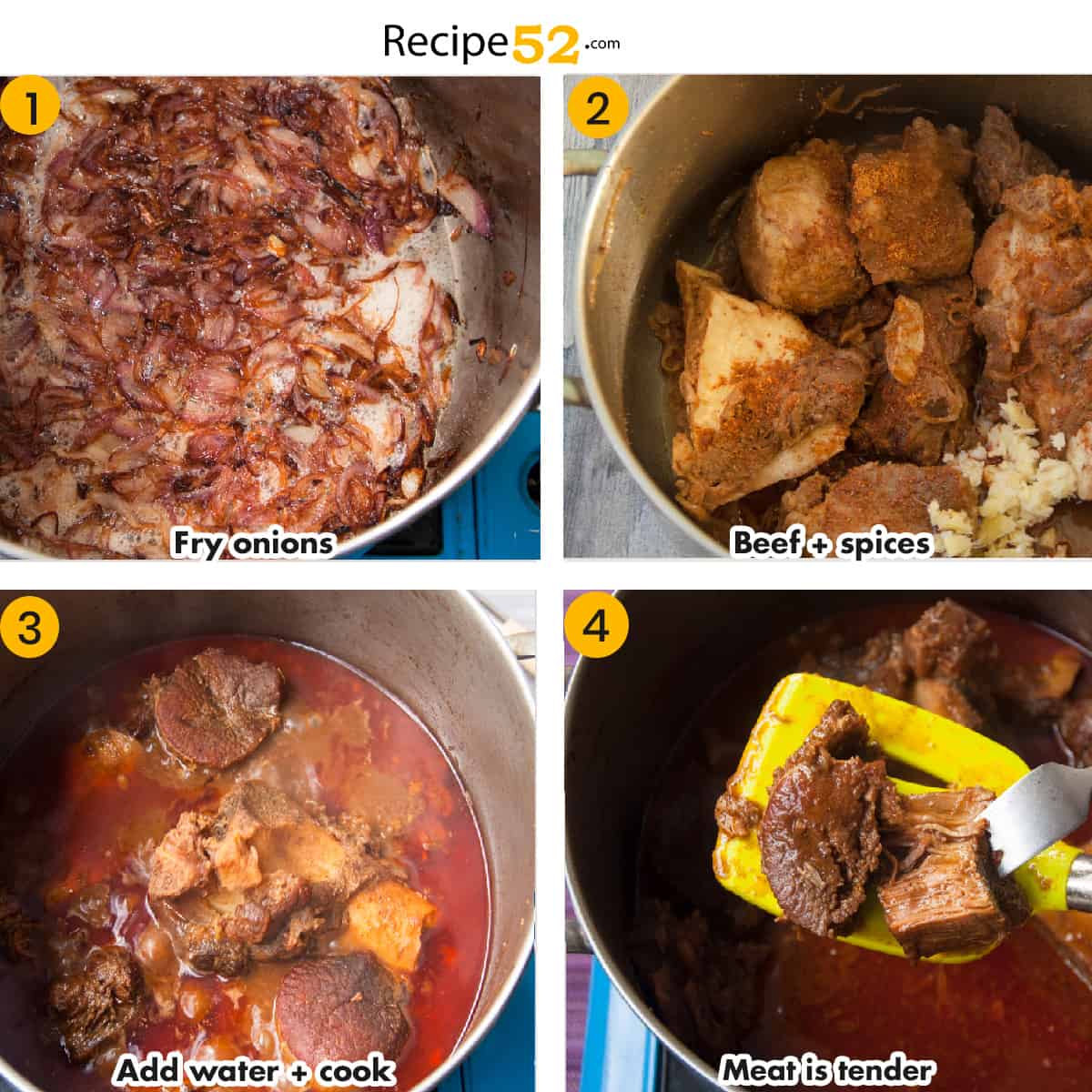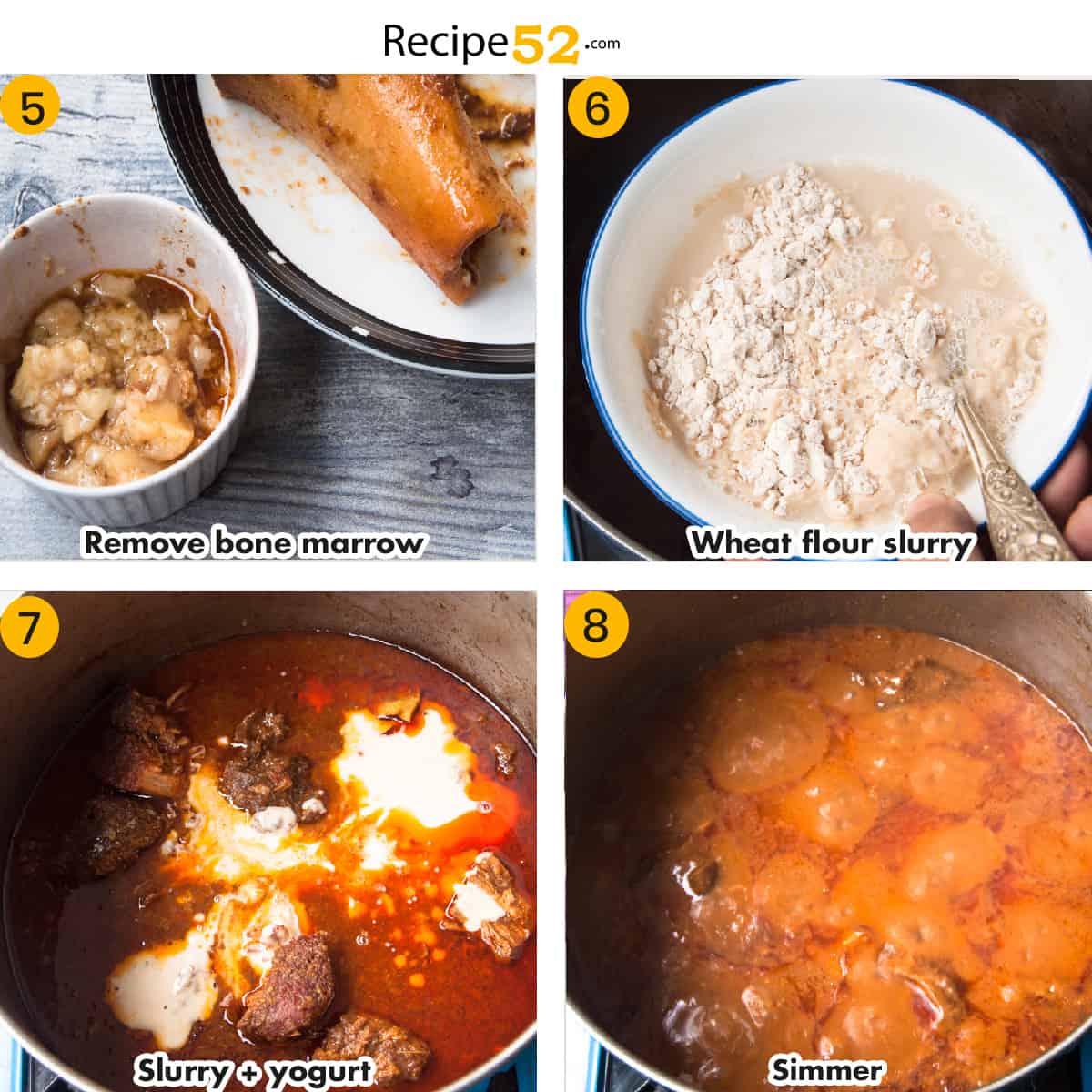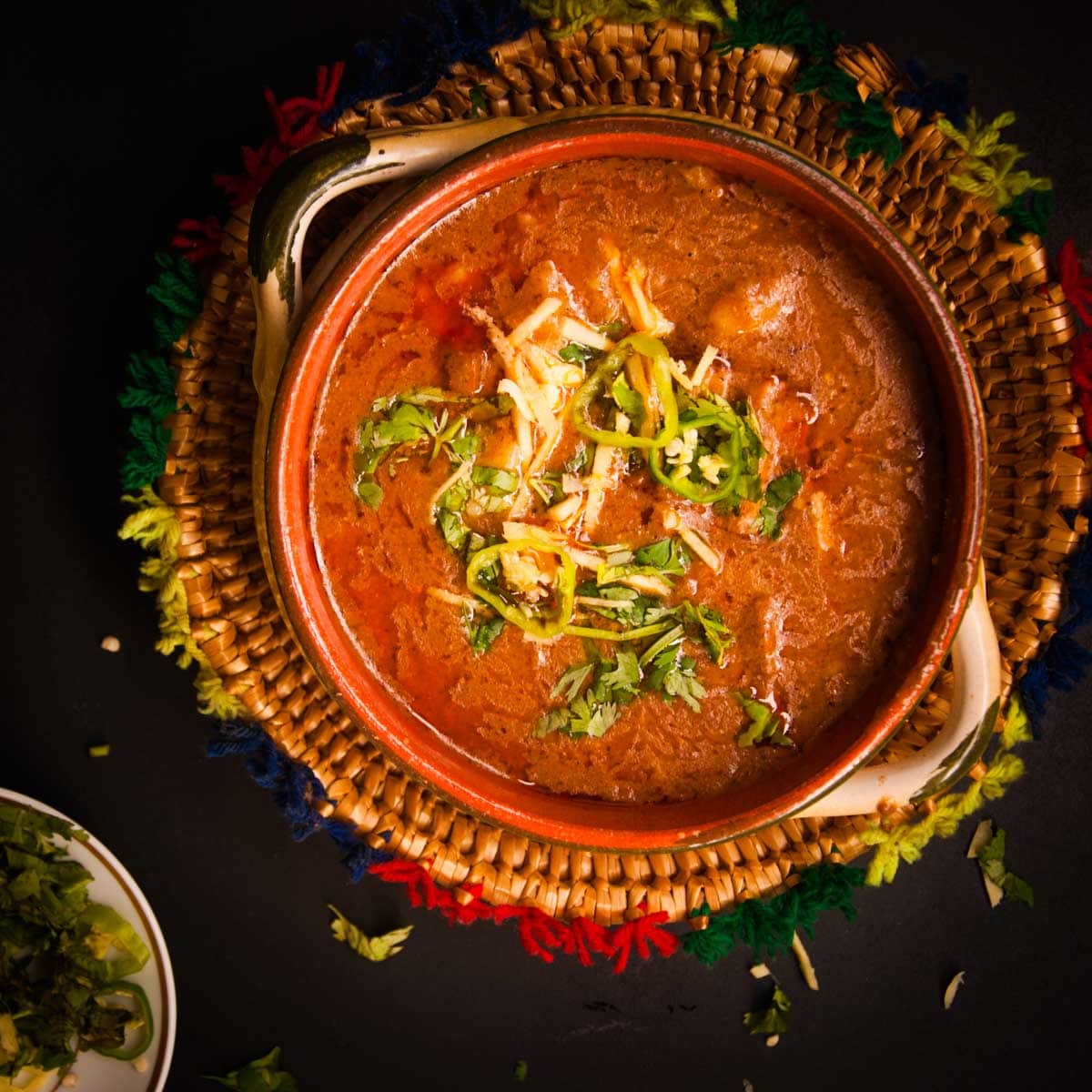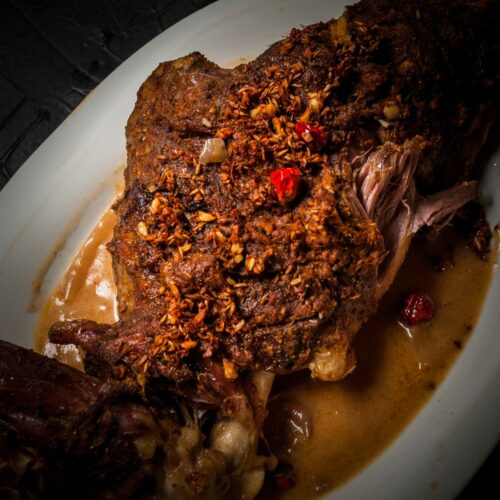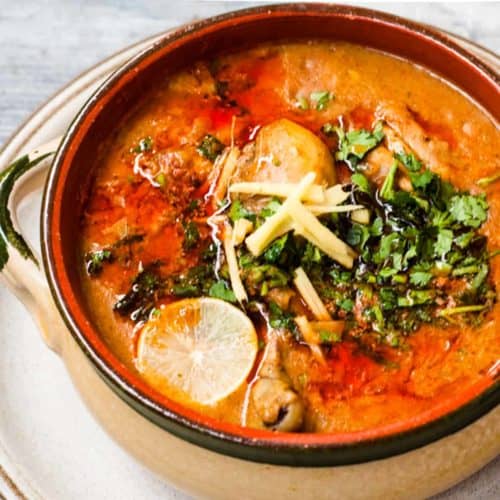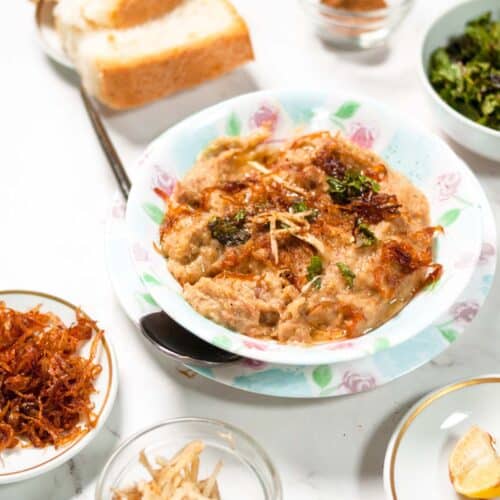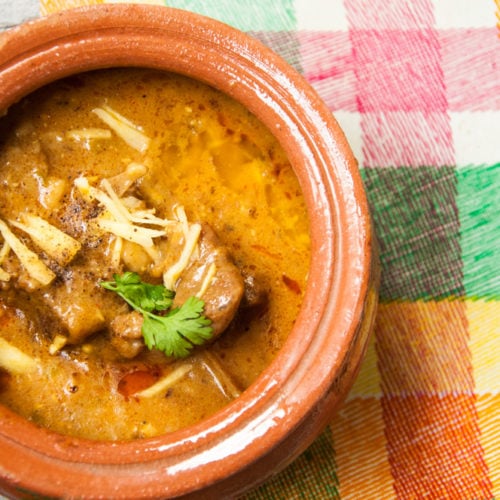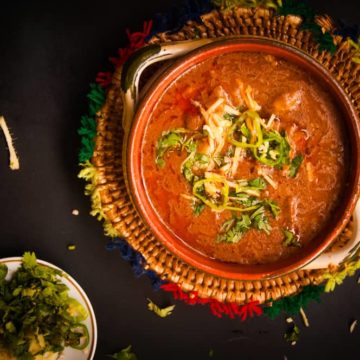Ready for a spicy flour-based beef stew? I know the description of the Pakistani beef nihari recipe is unique and difficult to imagine. If you love curried beef, you’d just love it. This Nihari recipe is a tribute to my love of Karachi Nihari. Nihari is made of beef shank stew loaded with bone fat spiced with nihari masala and thickened with whole wheat flour slurry. The fun doesn’t end here, it is loaded with tarka, and accompanied by the garnish of sliced green chilies, coriander, ginger, and lemon. Paired with naan, it is a nostalgic meal and that’s what makes it so important and special.
Origin
Nihari Recipe originated around the end of the eighteenth century in old Dehli in Nawab’s Kitchen. (Nawabs were semi-autonomous rulers of princely states of South Asia in Mughal times and also after that period.) So we are having some royal Nawabi food. Nihari comes from the Urdu and Arabic word Nihar, which means morning. In those times Nawabs would have Nihari for breakfast. After the Partition of India and neighboring Pakistan, the dish is extremely popular in Pakistan, especially in Karachi. Karachi foodies love spicy food and Karachi Nihari is all about spices. Here you can read more about nihari at Dawn blogs. Nihari is most fervently eaten in the holy month of Ramadan and Eid-ul-Adha. But, if you ask where does Nihari come from? It is still doubtful but most probably in old Dehli or Lucknow. Afterward, it became popular amongst Muslims in South Asia. There are different types of Nihari, plain (sada) nihari and Nalli Nihari. The untold secret to restaurant nihari is the use of lean camel meat that has thick grains and is chewier than beef. This makes it perfect for the long cooking of nihari. Of course, homemade nihari is made with beef only.
How does this recipe work?
Ingredients
The ingredients are simple and visible in the labeled pictures. Below I’ve discussed only ingredients for which I wish to suggest a substitute.
The fat that is released from the bones is the key to flavor and stickiness in the gravy. So if you’ve got extra bones, throw them in! Just remove them once the beef is completely cooked.
Nihari Masala: Nihari Masala mix is a combination of many Indian spices, black cardamom, cloves, cumin seeds, bay leaves, fennel seeds, turmeric powder, cinnamon, black pepper, red chili, coriander, long pepper, green cardamom pods, and Kashmiri red chili powder.
I’ve done a separate post on the Homemade Nihari Masala here. But if your pantry doesn’t have Indian spices you can always buy ready-made spice mix from an Indian store or online. How convenient.
How to make it?
Traditionally, Nihari was cooked overnight for at least 5-6 hours and served in the morning. Today, it is eaten more frequently as the main course than breakfast. Let’s go through the steps. Bone marrow and bones are key to the flavor of nihari while tough beef shank meat is perfect for long hours of cooking and rich flavor. So I’d suggest sticking to this cut of meat for best results. Nihari masala: I’ve tried both homemade and pre-made spices. Pre-made spices are convenient and with extra flavors and seasoning that give you the perfect taste without much hassle. Another reason is getting a spice mix is far cheaper than buying all the spices separately. But the ready-made spice mix is spicier and has a flavor enhancer too. If you have some time and all the spices in hand, making your spice mix is also easy. I recommend double or tripling the recipe and storing the extra nihari seasoning in the fridge. So all the effort you put to nihari masala powder making is worth it. Onion: Purple onions work best, if using other varieties avoid sweet onions. Whole Wheat flour or Atta flour: If you do not have wheat flour (AKA atta ). You can use plain flour (maida). For gluten-free options, you can use tapioca flour or corn meal. I’ve tried cornmeal. It doesn’t provide thickness like wheat flour but does the job. Yogurt: It improves the color of the stew, lightens the spice level, and adds a subtle tanginess to the stew. Low-fat yogurt can be used as well. Garnish: Fresh ginger, chilies, and lemon juice are extremely important to serve with nihari. It adds so much flavor and is a treat to the taste buds. Use large less spicy chilies for garnish.
Expert Tips
Try to make Beef Nihari 4-6 hours ahead and let it sit for a few hours for enhanced flavors. People usually cook it at night and store it in the fridge until the next day. You always freeze the leftover nihari as it pretty much retains its flavor upon freezing. You can also pour 2-3 tablespoons of heated butter on the nihari before serving which adds flavor and also mild down the spices.
Variation
With innovations in cooking and the growing consumption of chicken. People also make quick and easy Chicken Nihari at home. Garnish: But that’s somewhat secondary, the real heroes are garnish, julienned ginger, large and less spicy green chili sliced, freshly chopped cilantro, and lemon wedges. Nihari is festive food meant to be dressed up for the occasion with proper garnish. Temper: Sometimes a separate tarri of animal fat or ghee is also prepared by heating fat and adding red chili and nihari masala to the fat. This tari is poured over individual servings. I’ve skipped that and I like to add some hot ghee or just butter on top to simplify. What food to serve with it: Nihari is the main course and can be served alone like biryani. If you are thinking what to serve with nihari on a festive accasion?Usually bihari boti or chiken tikka or similar barbecued food pairs very well with Nihari. You can also make mutton nihari with mutton shanks. But a nihari lover knows that both versions are a compromise on actual beef nihari flavors. Hungry for more? If you try this Nihari recipe, I’d LOVE to hear your feedback in the comments. Your 5-ratings motivate me to do my best. Stay connected for more recipes and videos on Facebook, Instagram, Pinterest, and YouTube.
📖 Recipe
